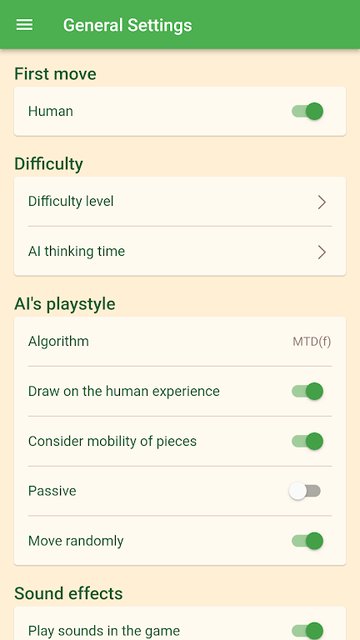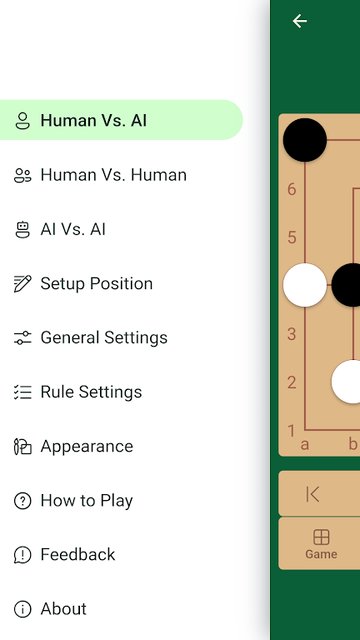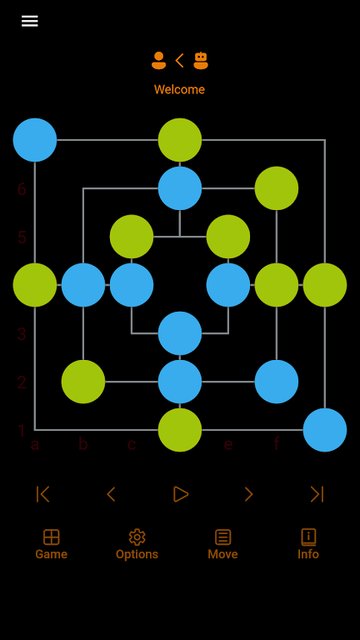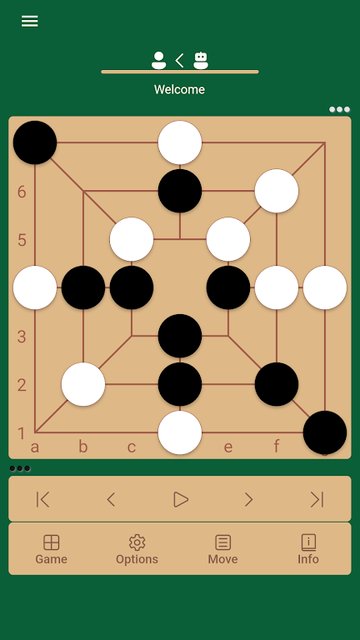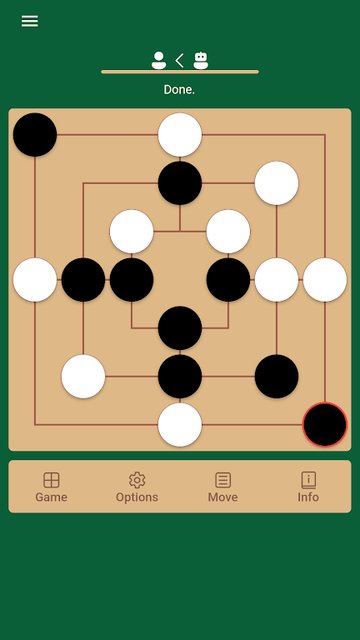Mill Game is a two-player board game typically played on a board consisting of concentric squares connected by straight or diagonal lines. The objective of the game is generally to either eliminate the opponent's ability to capture pieces or to trap the opponent, resulting in victory. Variants of the Mill Game adhere to common rules where players take turns placing their pieces on the board before being allowed to move them. As a result, the game consists of at least two distinct phases.
If three of one player's pieces form a straight line, commonly referred to as a "mill" or "three in a row," that player has the opportunity to capture one of the opponent's pieces on the board. The captured piece is permanently removed from play. The game continues until one player is unable to make a move or there are fewer than two pieces on the board for one player, resulting in a loss for that player. Due to the alternating turns of players, it is possible for the game to reach repeated board positions, leading to a draw if neither player alters their moves.
Mill Game's allure lies in its two-phase structure, requiring strategic placement of pieces followed by tactical movement. The strategic phase involves players placing their pieces on the board, setting the stage for subsequent actions in the game. The tactical phase unfolds as players strive to form mills and strategically capture their opponent's pieces while safeguarding their own.
The game's climax occurs when a player successfully forms a mill, allowing them to capture an opponent's piece. Once captured, a piece is permanently removed from the board. The game proceeds until a player cannot make a move or has fewer than two pieces, resulting in a loss.
Mill Game variants may differ in rules across regions, but the fundamental principles persist. The game's popularity stems from its easy-to-learn rules and the depth of strategy and tactics it offers. This makes Mill Game a widely enjoyed two-player board game suitable for both casual entertainment and competitive play.









